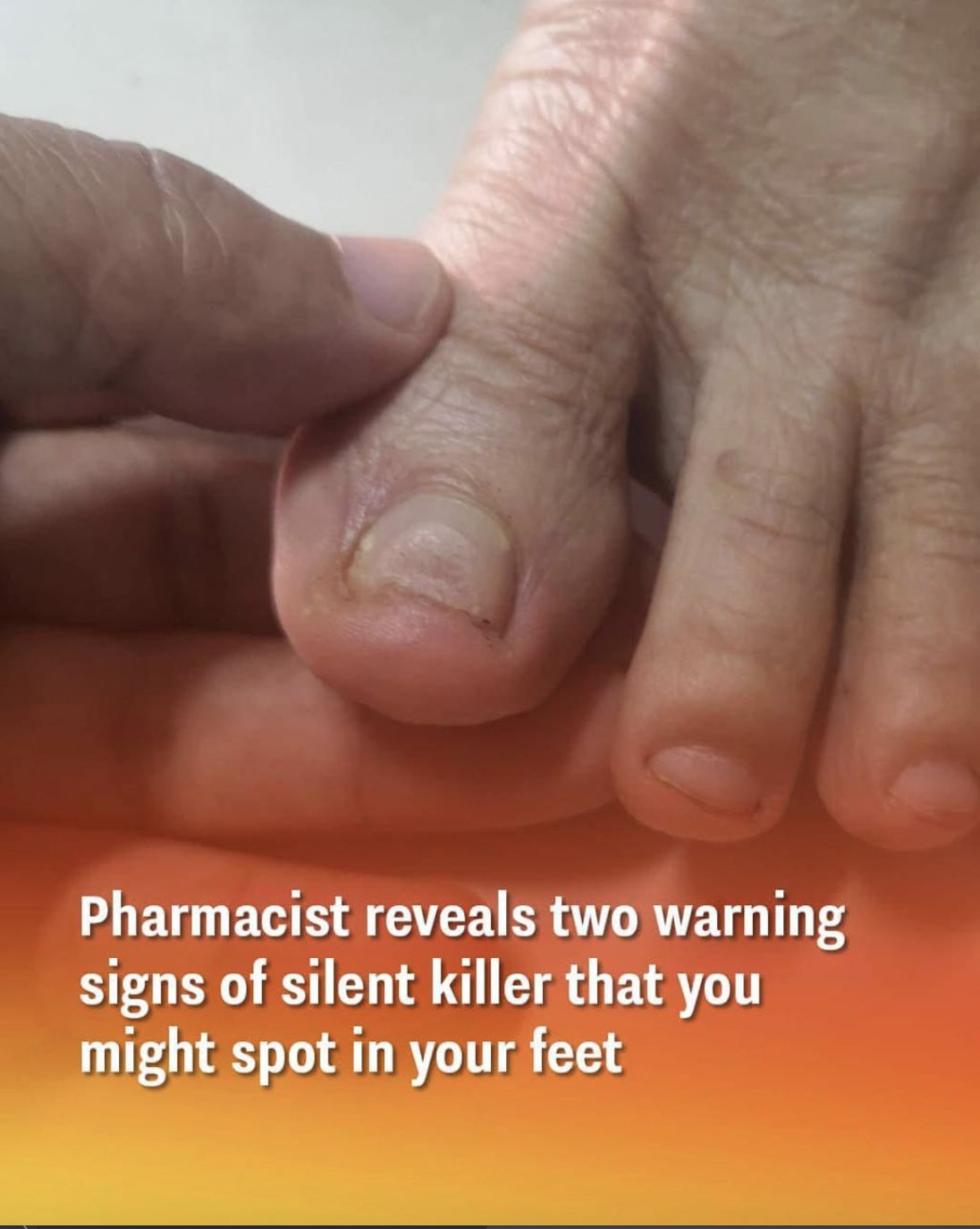Your feet are essential to your daily life, yet they often go unnoticed—until something goes wrong. Health experts warn that two silent killers can sneak up through your feet, often without obvious symptoms, leading to life-threatening complications like amputations or severe infections. These health risks are tied to heart disease and diabetes, and your feet can serve as early warning signs for these conditions.
In this article, we’ll explore how changes in your feet—such as color, temperature, or nail texture—can be indicators of serious health problems like heart disease and diabetes. Early detection can help you prevent life-altering consequences like amputation or severe infections. So, next time you take off your shoes, take a moment to check your feet for these warning signs.
Feet and Heart Disease: Understanding the Connection
Did you know that your feet could be one of the first places to show signs of heart disease? Since your feet are the furthest body part from your heart, they are often the first to show signs of poor circulation. The tiny blood vessels in your feet, particularly in your toes, are vulnerable to fatty blockages that can impede blood flow—a common early warning sign of heart disease.
Noel Wicks, a pharmacist and health advisor, explains that heart disease can impact your feet in subtle ways, including changes to the toenails and skin. These changes may seem minor, but they could indicate more serious underlying health issues.
Symptoms of Poor Circulation in Your Feet:
- Cold Feet: Persistent cold feet, even in warm weather, can indicate poor circulation. If blood isn’t reaching your feet properly, they may feel unusually cold to the touch.
- Slow-Healing Wounds: Minor cuts or blisters that take longer than usual to heal may suggest that your blood supply isn’t sufficient, which can be a sign of circulation problems.
- Pain While Walking (Claudication): If you experience aching or cramping in your feet or legs during physical activity, which subsides with rest, it could be a sign of poor blood flow.
- Discoloration: Your feet might appear pale, blue, or even purplish due to reduced blood circulation.
- Cramping: You may also experience cramping in your legs, thighs, or hips while climbing stairs or walking long distances.
If you notice any of these symptoms, especially if they persist, it’s essential to seek medical advice. Ignoring them could lead to more severe complications, including potential heart disease.
.
Feet and Diabetes: Early Warning Signs to Watch For
Your feet can also be an early indicator of diabetes, a condition that affects both blood circulation and nerve function. Diabetes-related complications often show up in your feet before anywhere else in your body, making foot health an important aspect of early diabetes detection.
The Centers for Disease Control and Prevention (CDC) warns that untreated diabetes can lead to severe complications, including foot ulcers that may get infected and require amputation. Shockingly, about 80% of lower-limb amputations in the U.S. are caused by complications from diabetes, highlighting the importance of catching the signs early.
Symptoms of Diabetes-Related Foot Problems:
- Pain and Cramping: You may experience pain in your legs, thighs, or calves during physical activity, a common symptom of reduced blood flow associated with diabetes.
- Tingling, Burning, or Pain: These sensations in your feet are often signs of nerve damage due to diabetes.
- Loss of Sensation: Diabetes can affect your ability to feel heat, cold, or touch in your feet, which increases the risk of unnoticed injuries.
- Changes in Foot Shape: Over time, your feet may change shape due to nerve damage caused by diabetes.
- Hair Loss on Toes or Feet: You may notice a lack of hair growth on your feet and lower legs, a possible sign of poor circulation.
- Dry, Cracked Skin: Dry, cracked skin on your feet can increase the risk of infection.
- Thickened, Yellow Toenails: Changes in the appearance of your toenails can be a sign of fungal infections, a common issue for those with diabetes.
- Infections: Blisters, sores, ulcers, and ingrown toenails are also warning signs that should never be ignored.
If you’re experiencing any of these symptoms, it’s crucial to consult with your doctor as soon as possible. Early management of diabetes can prevent complications such as foot ulcers, infections, and, in the worst cases, amputations. Timely medical intervention can also help with the recovery of damaged tissue and improve circulation.
How Insurance, Loans, and Treatment Can Help
Managing your health, especially when it comes to conditions like heart disease or diabetes, may require medical attention and treatment. Fortunately, many people can rely on insurance to help cover the costs of doctor visits, surgeries, medications, and therapies. If you have health insurance, make sure you’re aware of your benefits, which might cover screenings, medication, and treatment for diabetes or heart disease.
If you’re facing challenges in managing the costs of your care, loans or financial assistance programs may be available to help with medical expenses. If you’re dealing with diabetes-related complications, treatment options, such as rehabilitation or specialized care for foot ulcers, might be covered under your insurance, reducing out-of-pocket costs.
Furthermore, for those experiencing issues with circulation or foot health, seeking the expertise of an attorney or lawyer specializing in medical malpractice may be beneficial if you believe your condition was improperly managed by a healthcare provider.
Prevention and Recovery
The good news is that recovery from foot health issues related to heart disease or diabetes is possible, especially when caught early. Keeping an eye on your feet, maintaining a healthy lifestyle, and managing your blood sugar levels can go a long way in preventing further complications.
Taking classes on diabetes management or attending a claim conference on heart disease prevention can provide helpful knowledge on how to better care for your feet and overall health. With the right tools and support, you can stay on top of your health and avoid severe complications.
Conclusion: Pay Attention to Your Feet
Your feet are a valuable indicator of your overall health. If you notice any signs of poor circulation or diabetes-related foot problems, don’t ignore them. Early intervention is key to preventing serious complications, such as infections, amputations, or even life-threatening conditions.
Make it a habit to check your feet regularly for any signs of changes. If you experience symptoms like pain, cramping, discoloration, or slow-healing wounds, consult your doctor as soon as possible. With the right medical care, you can recover from foot-related issues and prevent further health risks.
Full Story: 10 Signs You’re Eating Too Much Sugar
Full Story: 7 Words Depressed People Use More Often – How to Recognize the Signs and Offer Support



